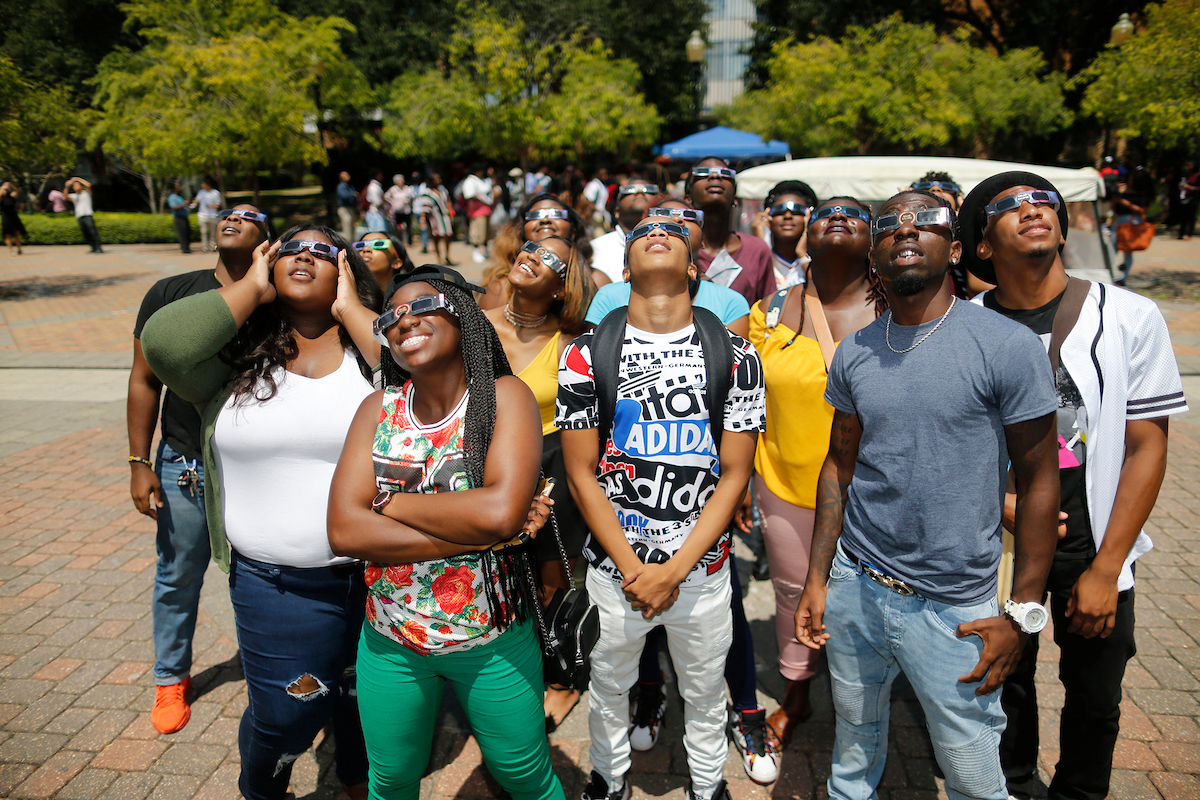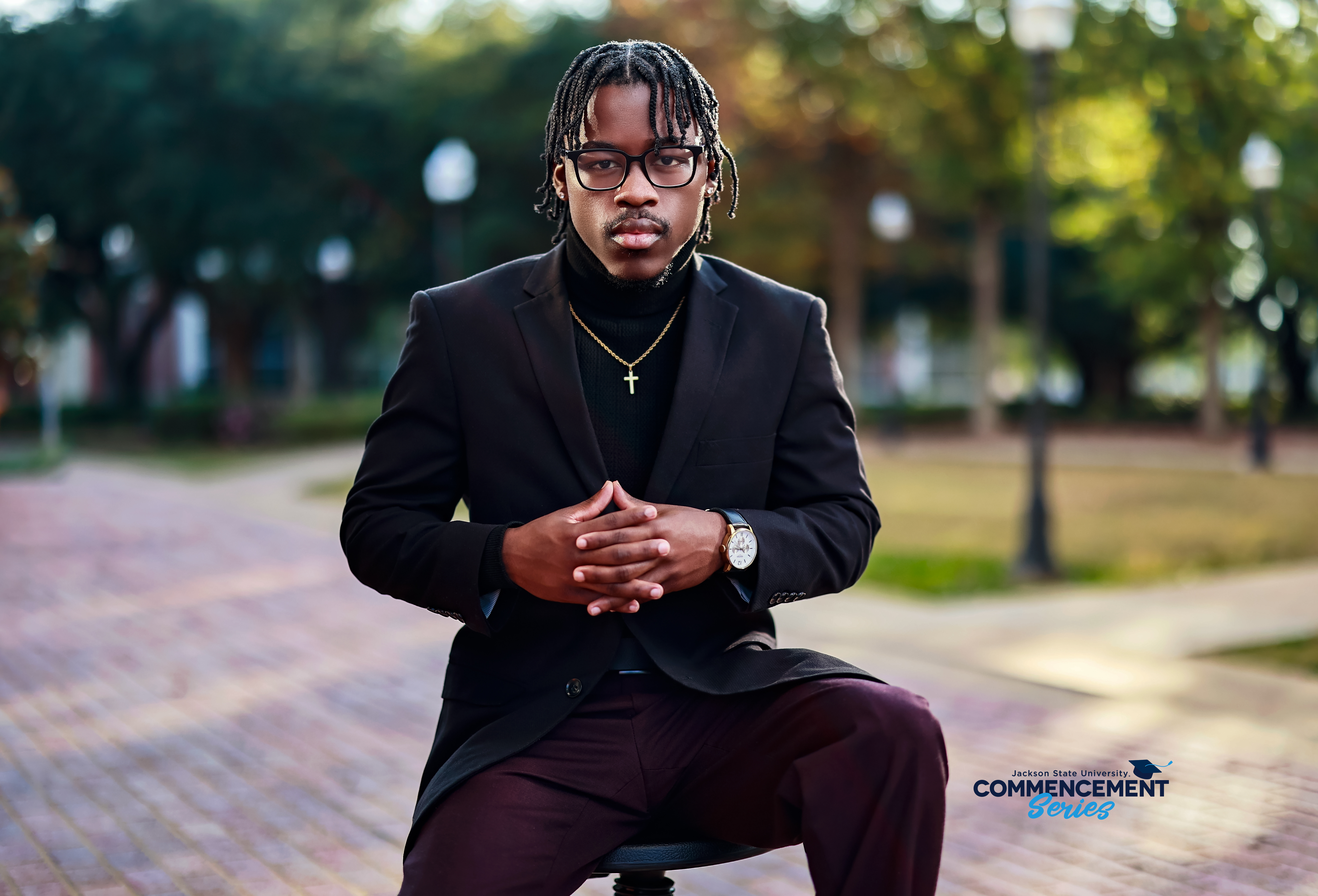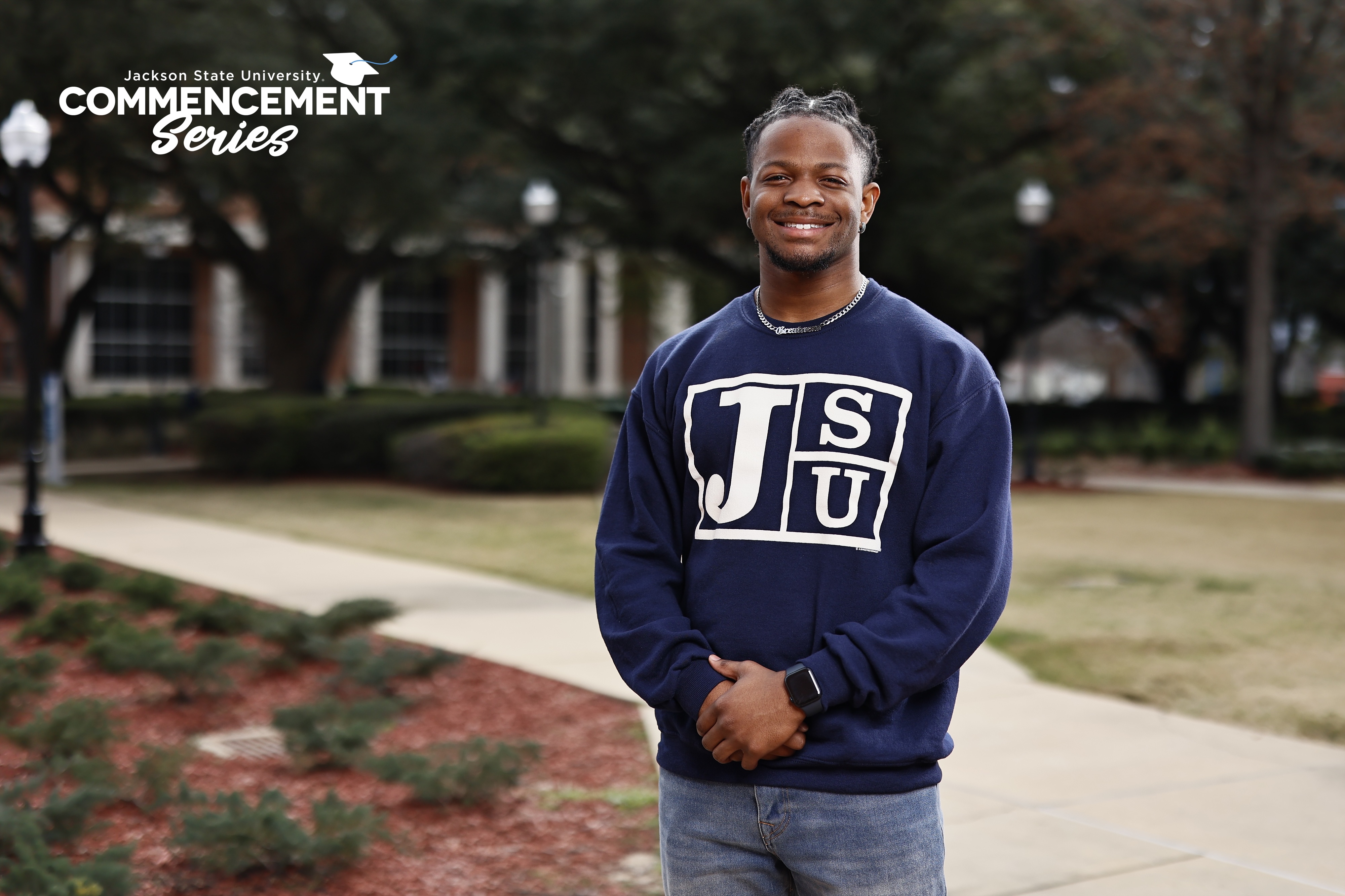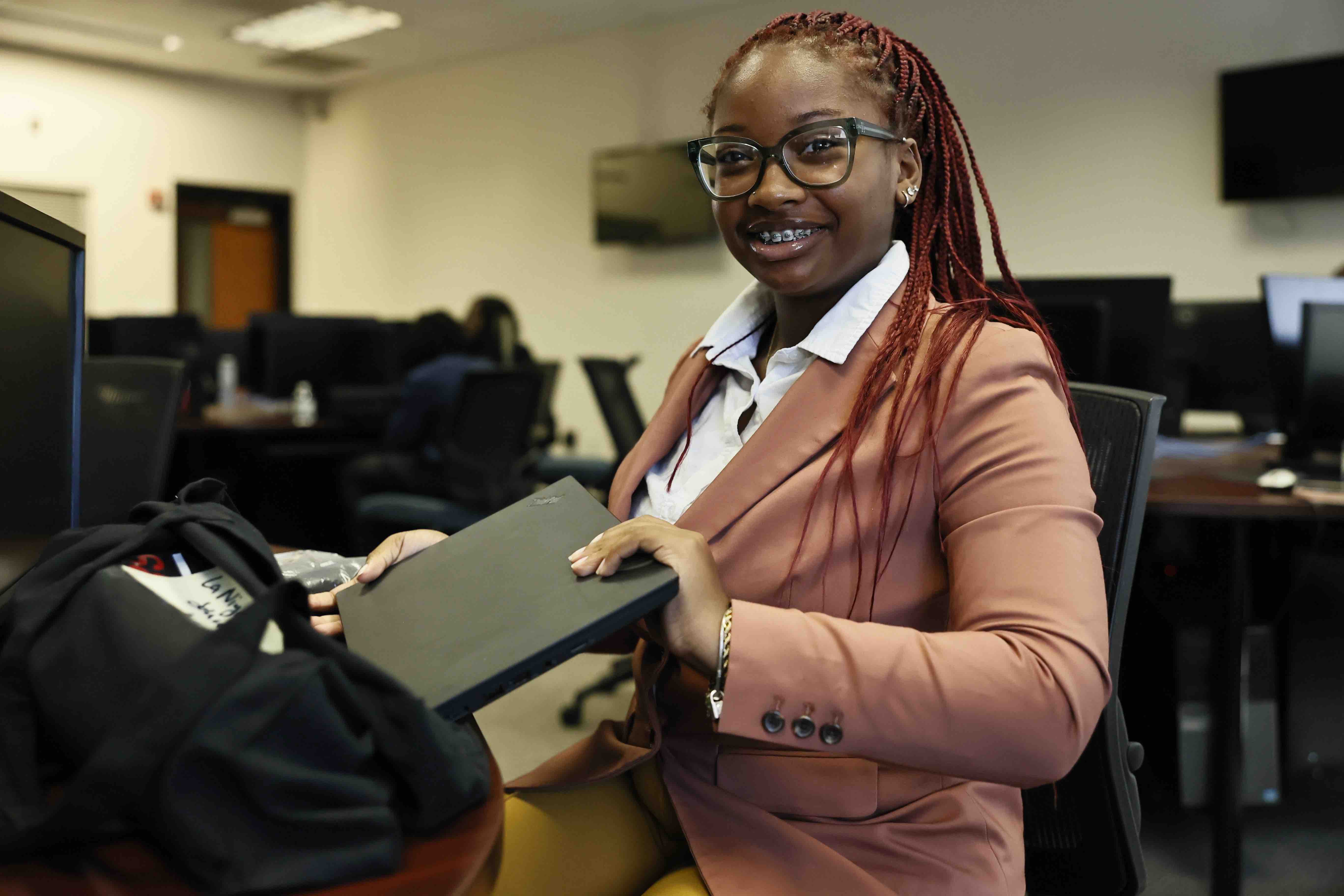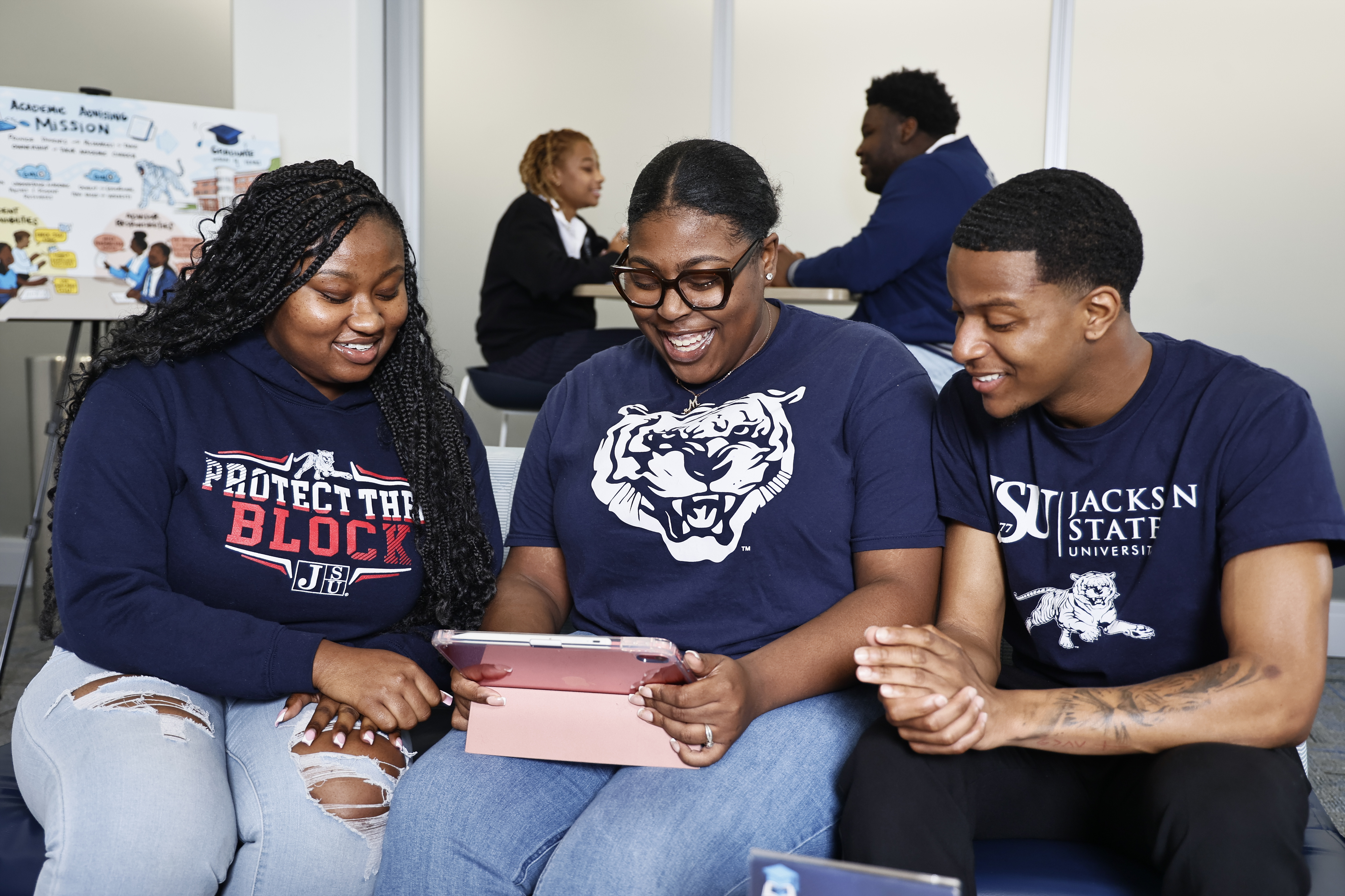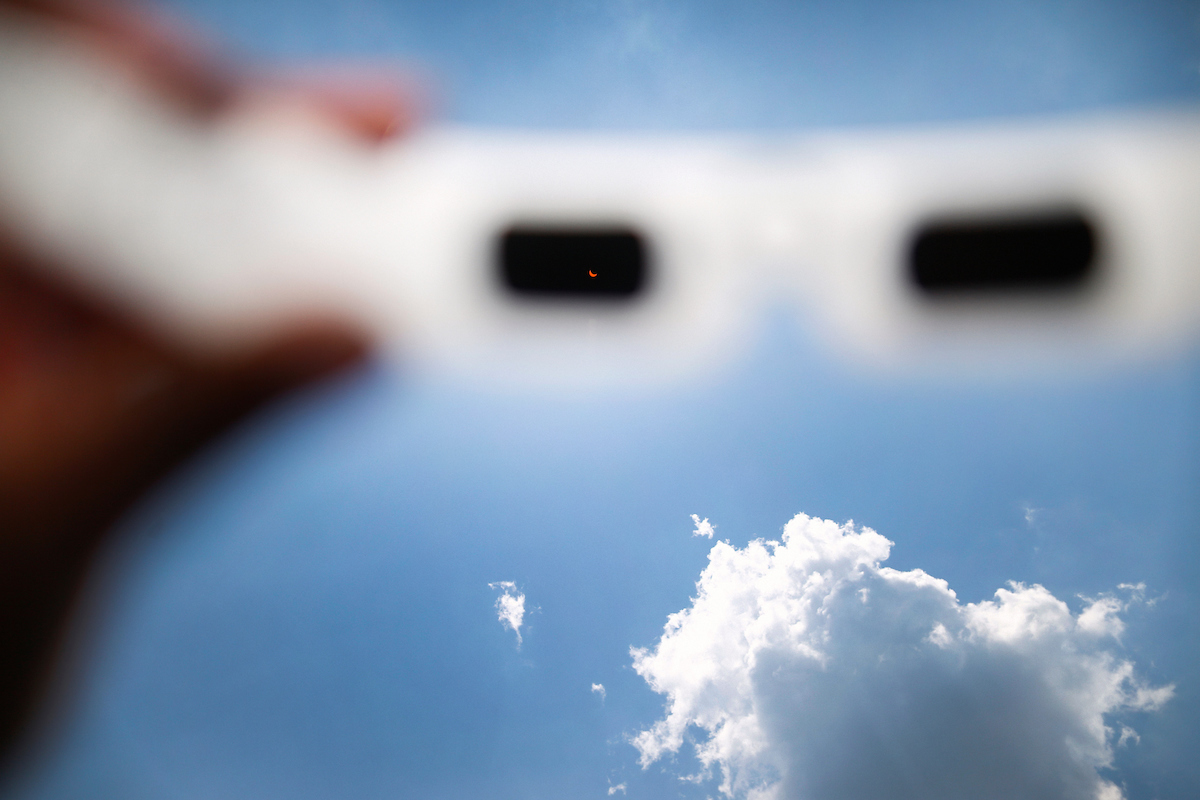
![]()
[hr]More than 1,000 students at Jackson State University peered through special eyeglasses along with faculty and staff on the Gibbs-Green Plaza to watch a rare solar eclipse streak across the U.S. for the first time since 1979.
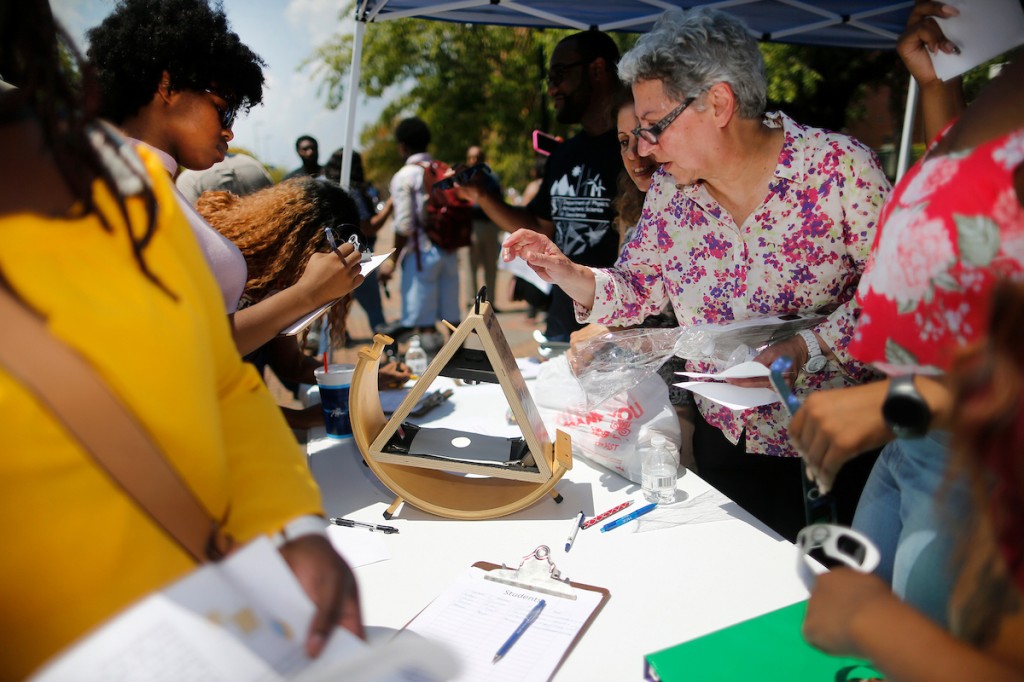
For JSU millennials, it was a sight to behold as was for millions of other people across the nation who stared awestruck into the sky. They witnessed a phenomenon in which the moon (appearing larger in diameter than the sun) briefly blocked direct sunlight and turned day into darkness in some places.
Ultimately, in Jackson, the moon covered 83.2 percent of the sun at its peek in the capital city, which occurred at 1:26 p.m.
The path of Monday’s solar eclipse was roughly similar to “totality” in the U.S. nearly a century ago on June 8, 1918.
Dr. Mehri Fadavi, interim chair of the Department of Chemistry, Physics and Atmospheric Sciences, organized the Solar Eclipse Watch Party through the College of Science, Engineering and Technology (CSET). She had purchased 1,000 solar eyeglasses weeks ago from eBay that were distributed to campus spectators. The glasses were so “hot,” figuratively speaking, that Fadavi ran out.
“Since, for many, it’s kind of a once-in-a-lifetime event this is a good thing for students to observe. This may help stimulate interest in science,” said Fadavi, who was pleased the event provided a spectacle on the first day of school of the fall semester for JSU students.
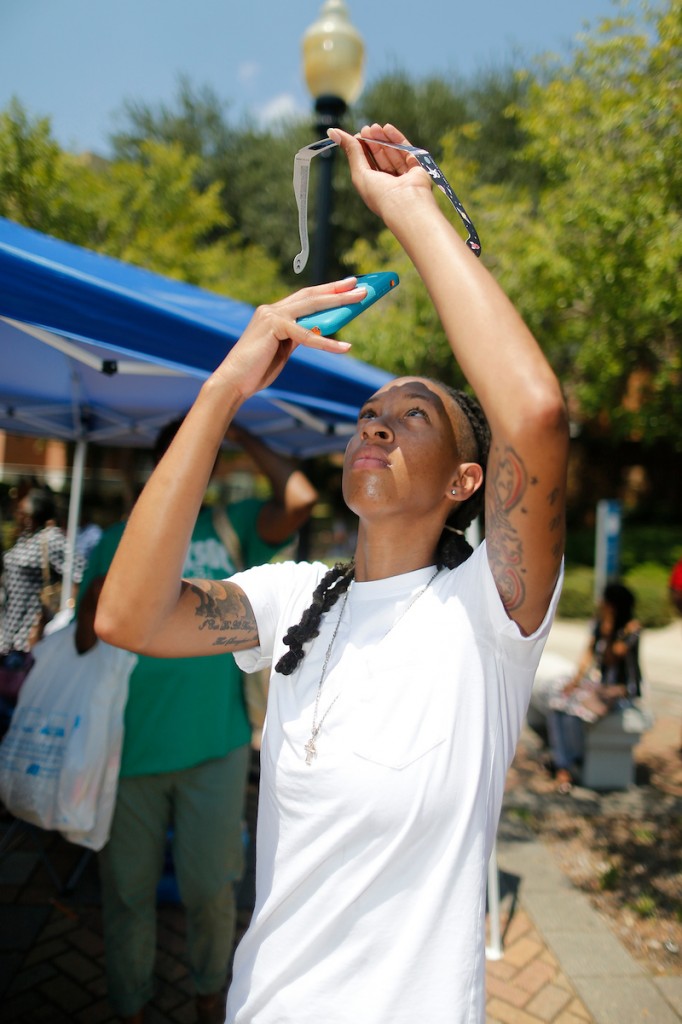
She acknowledged that some students initially were afraid to look through their glasses “because they had heard about the eclipse posing a potential damage to the eyes.”
Nevertheless, Fadavi said the eclipse is great for researchers studying explosions (solar flares) on the surface of the sun – many of which are from five to six times the size of Earth.
“This eclipse allows experts to observe very closely how these events impact the life climate,” she said. “There are a lot of particles that Earth’s magnetic field reflects. Those particles would be dangerous if we did not have Earth’s atmosphere.”
Other experts confirm that without Earth’s magnetic field that life form would be subject to bursts of unhealthy radiation on the ground and a potential erosion of the atmosphere.
For JSU students, the eclipse was, indeed, an experience of a lifetime.
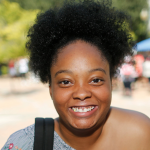
Tyler Johnson of Bossier City, Louisiana, a JSU junior biology major in CSET, said she’d never seen an eclipse before. She was surprised to receive a text on Monday from her mother warning against looking into the sky in the early afternoon.
“I wasn’t sure why I could not look,” she said. “But now that I have these glasses, it’s pretty cool. It’s getting a little dim out here because I’ve never seen anything like this. I’ve never studied an eclipse, but I’ve heard of them.”
Johnson said she would do more research after the solar event and was surprised how the temperature dropped. “Before the eclipse it was really hot. Now that the moon is in front of the sun, there’s a big difference.”
She said her peers were just as excited as she was because they had all stood in line during the blistering heat to get glasses.
Another first-timer was Anthony Reed, a CSET freshman biology major from Chicago. He, too, was warned not to look into the sky without proper solar eyeglasses.
“This event is a good thing – with everybody coming out to see what’s going to happen. Today was my first time hearing about the solar eclipse. I don’t know fully what to expect because I’ve never experienced anything like this before. I want to do more research about why this happens.”
Antrell Altman, a CSET senior studying electrical engineering, also expressed sheer delight over the eclipse.
“I’m just really enjoying God’s creation and how beautiful it is. I’ve known about eclipses since elementary school. I’m so happy to see everyone with a smile and enjoying this just as much as I am. We’re all young, and the next time this could happen could be 30 years from now,” he said.
